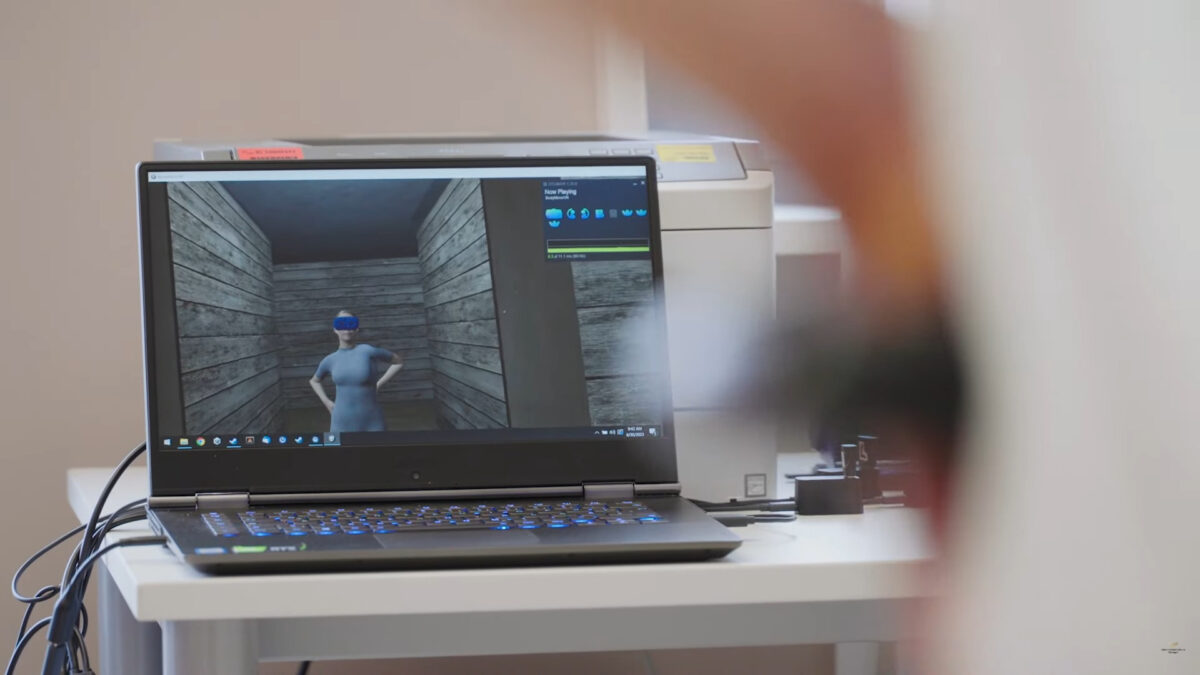Study finds VR to be a promising tool in the treatment of anorexia

VR can improve the self-perception of anorexics. This is the promising result of a study conducted at the University Hospital in Tübingen.
The daily life of people suffering from anorexia is dominated by the fear of gaining weight - and the measures they take to prevent it. A VR tool from the University Hospital in Tübingen, Germany, could provide relief. It was developed by the Department of Psychosomatic Medicine and Psychotherapy with support from the Max Planck Institute for Intelligent Systems.
Using a VR headset, the tool is designed to help people face the dreaded scenario. Apparently with success. Initial results of the study suggest that repeated virtual representations of a healthy body weight help test subjects reduce their fear of carrying extra pounds. They were published in the journal Psychotherapy and Psychosomatics.
Extended reality with an extended body in VR
"In terms of implementation, this has been very difficult so far, because most patients have become very good at preventing weight gain," explains psychotherapist and project leader Dr. Simone Behrens, "they can't even imagine a life as a normal-weight person who no longer thinks explicitly about food or their body. That's why classic motivational techniques often don't work so well."
The tool is designed to help them develop helpful strategies for managing a healthy body weight. Although the study takes place in VR, the term "extended reality" applies here in a different way. n the virtual reality environment, study participants can view their body weight from both a first-person perspective and in a virtual mirror.
This approach breaks through the boundaries of 'classical' body therapy," says Prof. Katrin Giel. She is head of the Translational Psychotherapy Research Group. The setup takes about ten minutes. It includes a laptop, a Valve Index with controllers, base stations on tripods, and Vive Trackers (2.0) on upper arms and a hip belt. The setup is shown in a Youtube video in which Behrens gives more insight into the study (turn on English subtitles for automatic translation).
A key feature is the biometrically accurate, plausible proportions - unlike the often unnatural avatars in VR games. They are based on thousands of body scans. "We can also customize the height and weight of each patient," says Behrens.
For the pilot clinical study, Behrens and her team studied 24 female patients undergoing inpatient or outpatient treatment. They were able to view their healthy virtual bodies in four 30-minute sessions. These sessions were accompanied by extensive one-on-one interviews.
Learning healthy self-perception in VR.
Participants behaved very differently. Reactions ranged from initial tension, which quickly subsided, to later nervousness after participants got used to the situation seeing their larger virtual body.
"Interestingly, however, almost all patients reported that they found the virtual representation very helpful for their personal recovery," summarizes project leader Behrens. The working group now wants to build on these results and investigate the mechanisms of virtual body exposure in more detail.
With prescription lens inserts, you can comfortably use your VR headset without glasses. Use the following link to get a 5% discount.
Note: Links to online stores in articles can be so-called affiliate links. If you buy through this link, MIXED receives a commission from the provider. For you the price does not change.